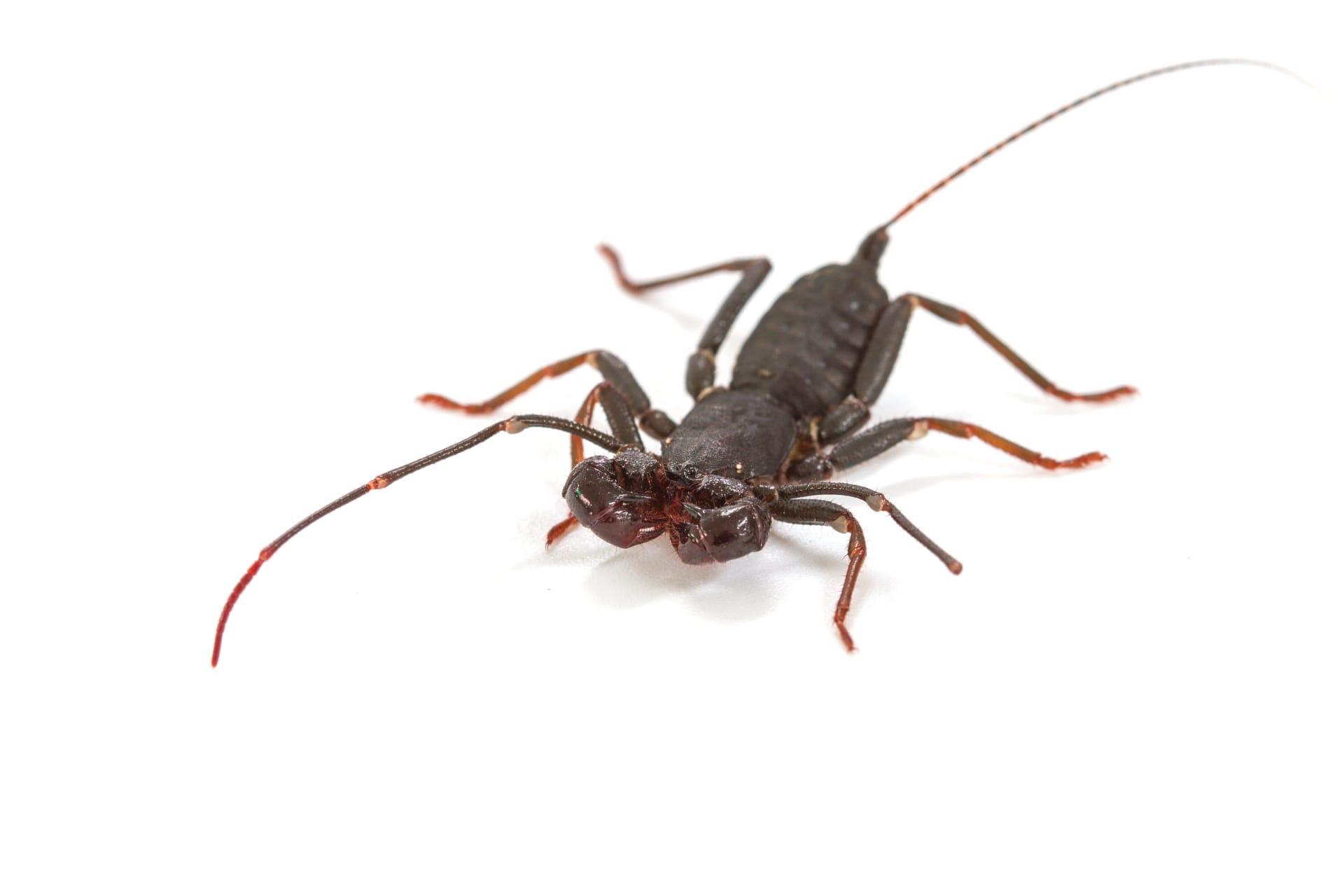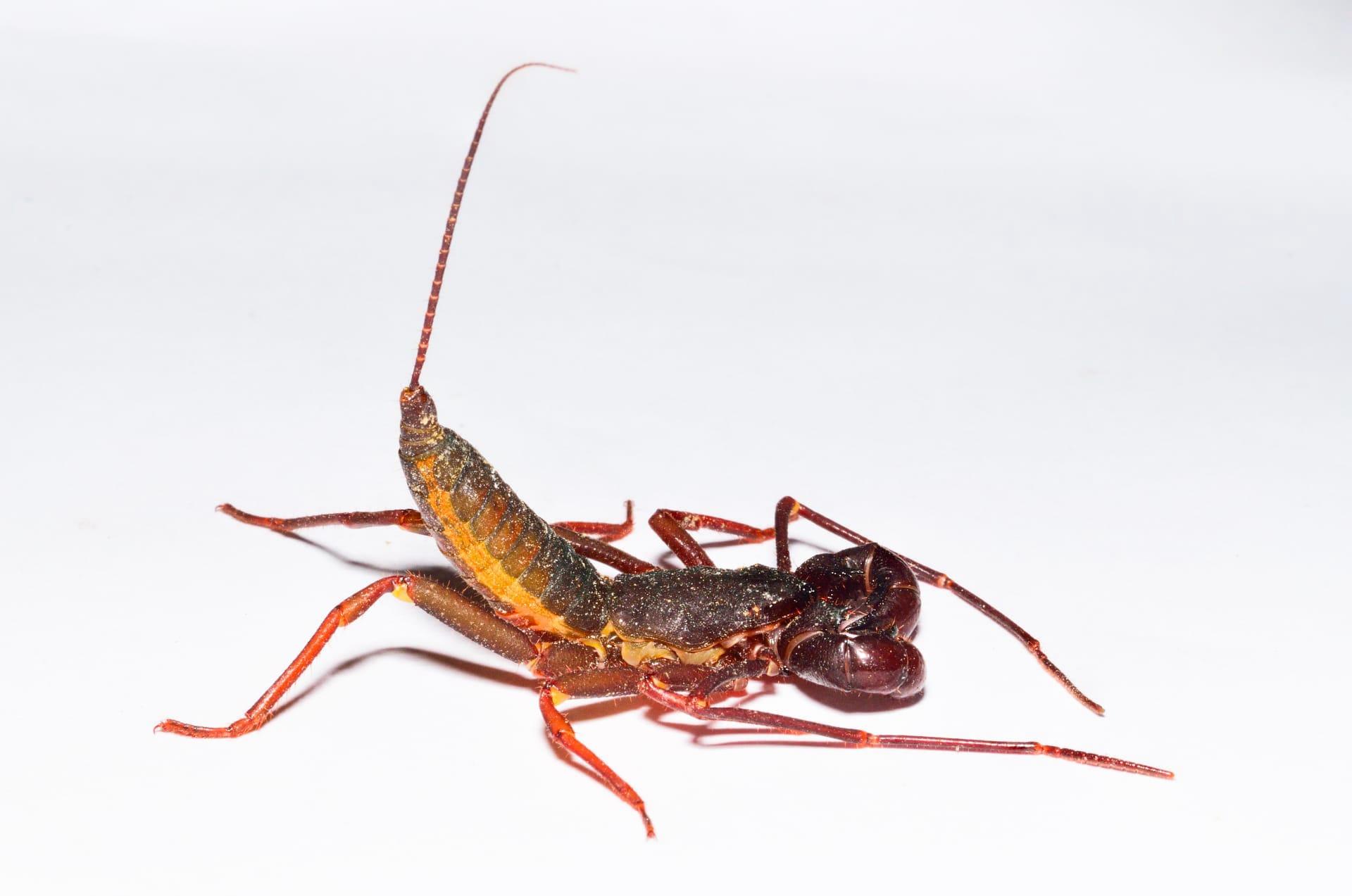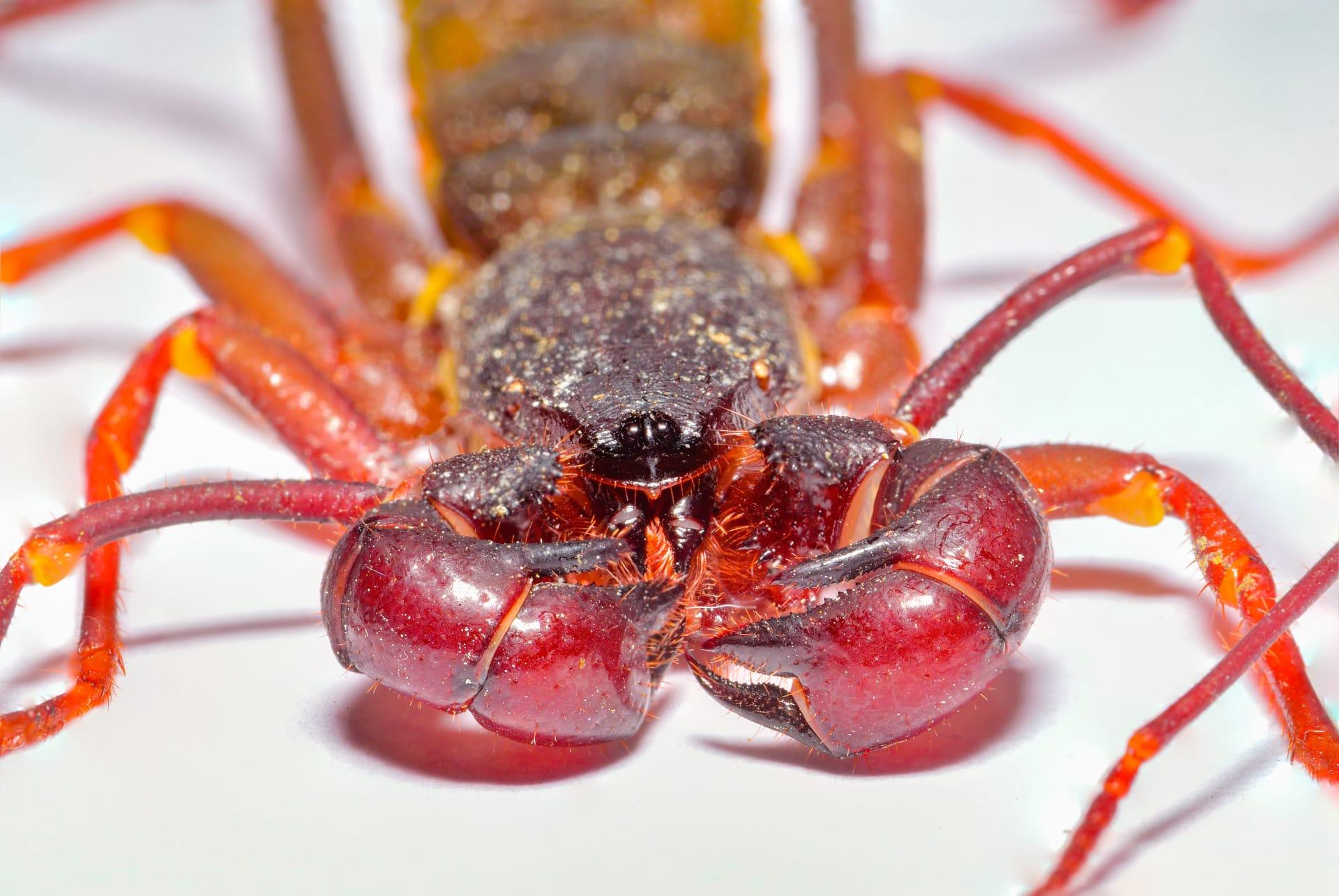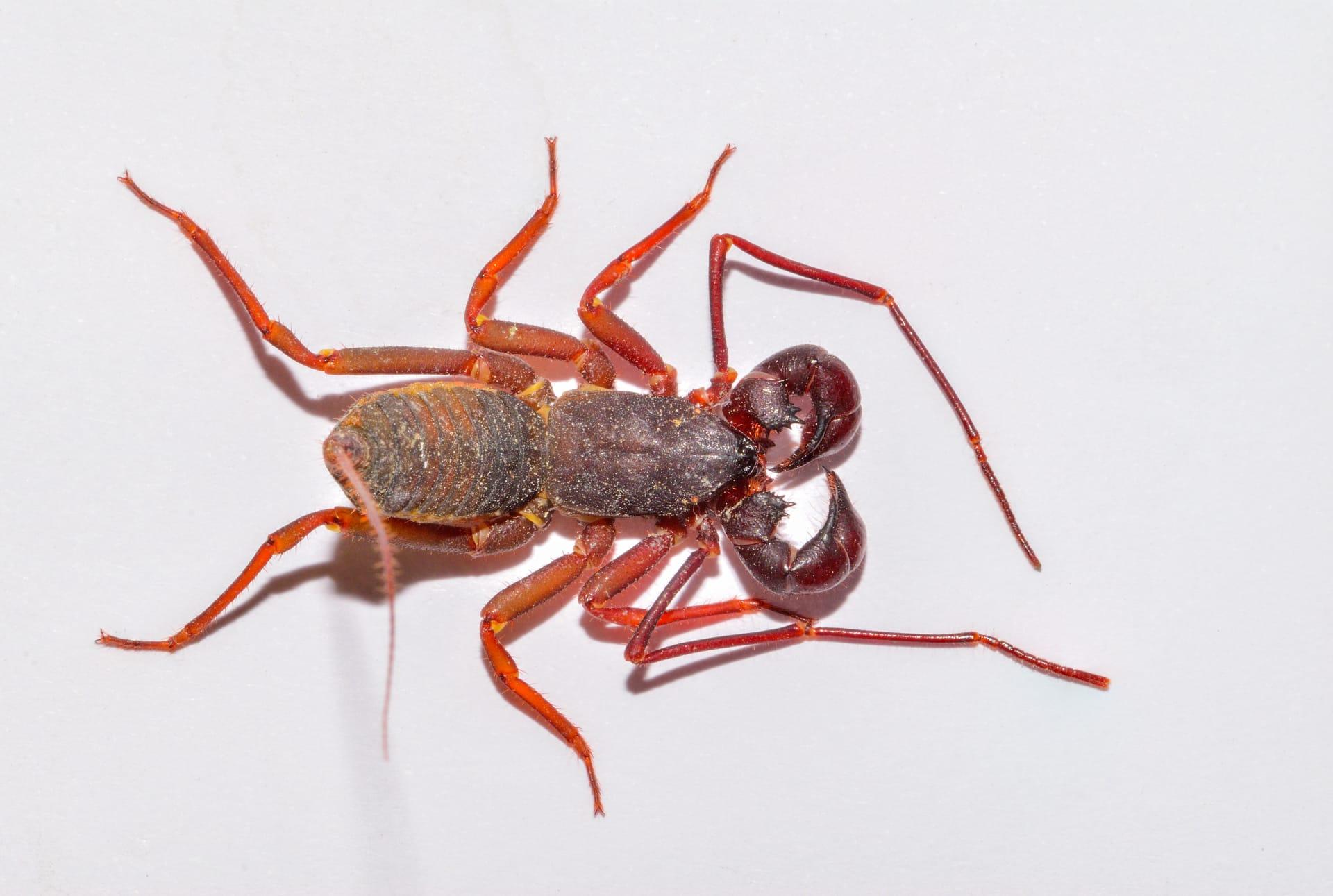Whip Scorpion
- Home /
- Mini Encyclopedia /
- Animal /
- Whip Scorpion
1
Whip Scorpions, scientifically referred to as members of the order Thelyphonida, embody a fascinating group within the class Arachnida. These creatures, often mistaken for scorpions due to their menacing appearance, diverge significantly in taxonomy. They lack the venomous stinger found in true scorpions and instead possess a unique, whip-like tail, which serves as a sensory organ. This order is further divided into three families: Thelyphonidae, Uropygidae, and Hypoctonidae, each housing a variety of species that exhibit distinct physical and behavioral traits. The most recognized species among these is the Giant Whip Scorpion, known scientifically as Mastigoproctus giganteus, which can reach up to 7 cm in body length, not including its elongated tail.
Whip Scorpions enjoy a wide distribution that spans across the tropical and subtropical regions of the world, with a significant presence in Southeast Asia, Africa, and the Americas. Their habitat preference often leans towards humid environments, such as under rocks, logs, and other debris in forested areas where moisture is abundant. In the Americas, they are particularly prevalent in the southern states of the USA, extending into Mexico and further into Central and South America. The adaptability of these arachnids to various microhabitats within these regions underscores their evolutionary success, allowing them to thrive in areas that provide adequate humidity and temperature conditions essential for their survival.

2
A common misconception surrounding Whip Scorpions is their alleged venomous nature, which often leads to unwarranted fear and avoidance. Many people mistakenly believe that, like their true scorpion cousins, Whip Scorpions possess a venomous sting that is dangerous to humans.
In reality, Whip Scorpions are entirely harmless to humans in terms of venom. Instead of a venomous sting, they possess a pair of pedipalps (pincer-like appendages) and a long, whip-like tail, which they use primarily for sensory purposes and not for defense or predation. The most notable defense mechanism they have is the ability to spray a vinegar-like substance from their tail, earning one of their species, the Vinegaroon, its common name. This spray, while having a strong odor and the potential to irritate, is not venomous and poses no significant threat to humans.

3
Whip Scorpions employ several intriguing survival strategies that enable them to evade predators and secure prey. Their nocturnal nature serves as a primary defense mechanism, allowing them to hunt and operate under the cover of darkness, thus reducing the likelihood of predation. During the day, they retreat to the safety of their burrows or under debris, effectively camouflaging themselves within their environment.
For predation, Whip Scorpions rely on their highly adapted pedipalps, which are not only formidable in appearance but are also incredibly sensitive, capable of detecting vibrations in the air and on the ground. This acute sensory ability enables them to pinpoint the precise location of their prey, which primarily consists of small insects and other arthropods. Upon detection, they swiftly grasp their prey with their pedipalps, utilizing their strong mandibles to secure and consume their catch.

4
In their natural habitats, Whip Scorpions play a crucial role in maintaining ecological balance. As predators, they help regulate the populations of the insects and arthropods they prey upon, preventing any single species from becoming overly dominant. This predatory activity contributes to the biodiversity and health of their ecosystems, as it ensures a more equitable distribution of resources among various species.
Beyond their role as predators, Whip Scorpions also contribute to the nutrient cycle within their ecosystems. The organic matter from their feces, as well as their bodies after death, provides essential nutrients that enrich the soil, fostering plant growth. This, in turn, supports a wider range of herbivorous and omnivorous species, thereby sustaining a diverse and dynamic ecological community.

5
Film: "The Secret World of Arachnids" is a captivating documentary produced in the United States in 2018. It delves into the lives of various arachnids, with a significant segment dedicated to the enigmatic Whip Scorpion. The film offers viewers a glimpse into their nocturnal activities, survival strategies, and the pivotal role they play in their natural habitats, all captured through stunning macro photography.
Book: "Arachnids of the World: Diversity, Behavior, and Ecology" is a comprehensive guide published in the United Kingdom in 2020 by Dr. Elizabeth Greene. This book features a chapter on Whip Scorpions, providing readers with detailed insights into their taxonomy, morphology, and ecological significance. Dr. Greene's work is renowned for its accessible language and high-quality photographs, making it an invaluable resource for both arachnid enthusiasts and professional researchers.
Book: "The Hidden Life of Desert Dwellers" authored by Carlos Mendez, published in the United States in 2019, offers an in-depth exploration of the fauna found in arid regions, including a fascinating section on the Whip Scorpion. Mendez's narrative weaves together scientific facts with engaging anecdotes, shedding light on the adaptability and resilience of these creatures in some of the harshest environments on earth.